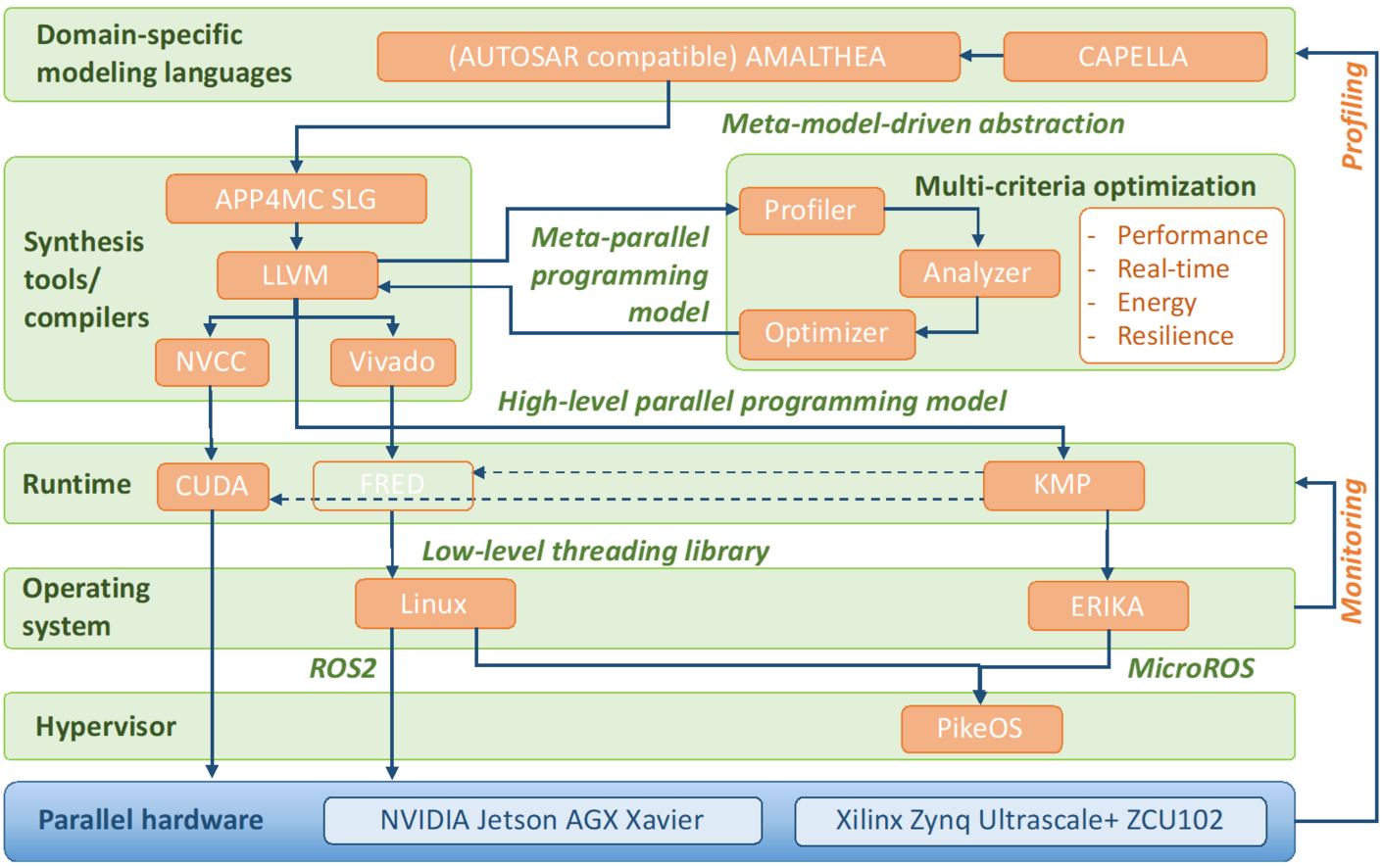The European-funded AMPERE project successfully concluded on 30 June 2023, providing an innovative software framework that leverages high-performance computing (HPC) parallel programming models to cope with the performance requirements of complex cyber physical systems (CPS) in the automotive and rail domains, with a high potential for reducing software development and deployment costs by 30%.
By integrating functional and non-functional requirements in a single software architecture, the AMPERE project addresses the challenge of increasing complexity while maintaining real-time operations with energy, time, security, and resilience considerations. A significant project accomplishment includes bridging the gap between rail (CAPELLA) and automotive (AMALTHEA) domain-specific modelling languages (DSML) with parallel execution.
The project extended the OpenMP parallel programming model and the LLVM compilation framework used in the HPC domain to unlock parallel opportunities whilst fulfilling non-functional requirements. The runtime parallel frameworks in AMPERE offer a modular approach that allows users to select components that best suit their needs.

Figure 1: Novel software architecture created by the AMPERE project
Main AMPERE project key takeaways include:
- Redefining HPC programming models to unleash their potential for cyber physical systems (CPS), thus streamlining development and reducing time-to-market processor architecture
- Enabling the seamless transformation of Domain-Specific modelling Languages into the OpenMP programming model for an efficient exploitation of parallel resources
- Addressing non-functional requirements to ensure resilience, safety, and security of CPS.
- Providing safety and security mechanisms through a hypervisor and operating systems, PikeOS and OpenERIKA while efficiently supporting the parallel execution model
Key Achievements
- Reduction of 30% on the software development costs, while providing the required performance and energy budget imposed by system
- Up to 3x of performance speed-up and a system utilization of 100% for the two AMPERE use cases, guaranteeing the fulfilment of the non-functional requirements
- Provide extensions for automotive and railway DSMLs to better capture requirements
- New extensions to the OpenMP parallel programming framework targeting cyber-physical systems
AMPERE Project Use Cases: Automotive and Rail
The AMPERE software framework’s applications were evaluated through two use cases in the automotive and rail industries. Both cases require swift and accurate responses to increasingly complex inputs. In the automotive use case, the Predictive Cruise Control (PCC) extended adaptive cruise control by calculating future vehicle velocity using electronic horizon data to enhance fuel efficiency. Using the AMALTHEA DSML and optimized OpenMP parallel source code, it effectively exploited NVIDIA Jetson Xavier AGX and Xilinx UltraScale+ platforms while meeting defined non-functional requirements.
The rail use case implemented Thales’ Obstacle Detection and Avoidance System (ODAS) to evaluate AMPERE technology using CAPELLA DSML and the AMPERE bridge for model-to-model transformation. By transforming the model into OpenMP with AMPERE synthesis tools, it harnesses the parallel capabilities of heterogeneous platforms with multi-core, Graphic Processing Units (GPU) and Field Programmable Gate Arrays (FPGA) acceleration while ensuring non-functional requirements.
The AMPERE project provides a leap forward in the cyber-physical computing domain by enabling HPC parallel programming models to offer a faster and more reliable and resource-efficient development and deployment of systems, like rail and automotive. The applications of the AMPERE software framework could potentially revolutionize a wide array of industries that require the use of sophisticated parallel and heterogeneous computing technologies” says Eduardo Quiñones, AMPERE coordinator and Group Leader of the Predictable Parallel Computing Group at the Barcelona Supercomputing Center.
SOURCE: SYSGO

